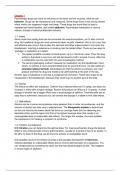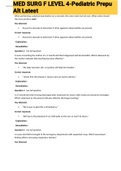Samenvatting
Uitgebreide samenvatting literatuur psychopharmacology 2023/2024
- Vak
- Instelling
- Boek
Vorig jaar heb ik het vak psychopharmacology met een 9,5 afgerond! Ik heb toen uitgebreide een uitgebreide samenvatting van het boek gemaakt en deze wordt ook dit jaar weer gebruikt
[Meer zien]













